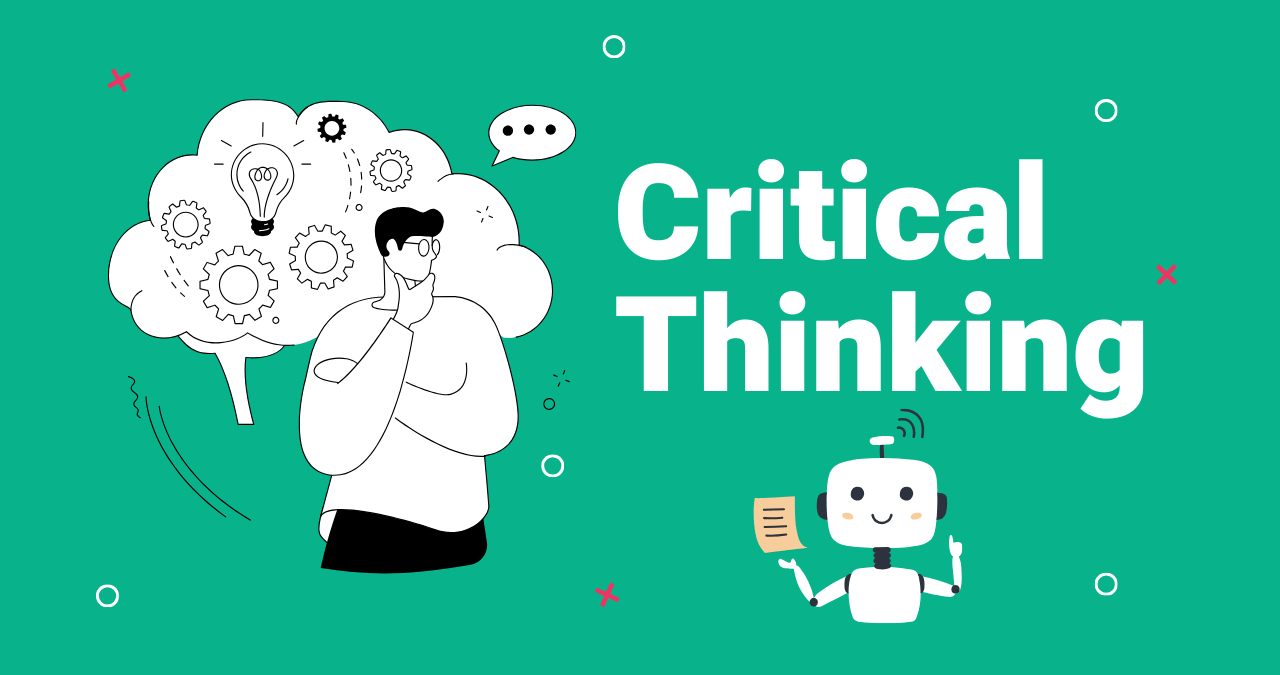Using ChatGPT as a tool in education has shown the potential to enhance students’ critical thinking skills. A study conducted at a university found that using ChatGPT increased students’ competence to think critically by 16 percentage points.
While not all students attributed this enhancement to their engagement with ChatGPT, the overall results suggest its effectiveness in promoting critical thinking. In this blog post, we will delve into the world of ChatGPT to enhance students’ critical thinking.
Benefits of Incorporating ChatGPT into the Learning Process:
There are three primary methods through which ChatGPT can enhance students’ critical thinking:
- Promoting analytical thinking: ChatGPT provides a platform for students to engage in analytical discussions and problem-solving. The interactive tool enables students to explore various viewpoints, question assumptions, and cultivate analytical abilities.
- Encouraging creative thinking: By interacting with ChatGPT, students are encouraged to think creatively to generate unique solutions and ideas. The tool provides an opportunity for students to unleash their imagination and explore unconventional approaches to problem-solving.
- Developing communication skills: It facilitates communication and collaboration among students. Through discussions with the tool, students practice articulating their thoughts, asking relevant questions, and expressing their ideas effectively, thus improving their communication skills.
Understanding the Role of ChatGPT in Education:
An essential advantage of integrating ChatGPT into the learning process is its capability to stimulate analytical thinking. Through interactive discussions and problem-solving activities, students have the opportunity to explore different perspectives, challenge assumptions, and develop their analytical skills.
This encourages a more profound grasp of the subject matter and amplifies their capacity for critical thinking. Additionally, ChatGPT encourages creative thinking by prompting students to generate unique solutions and ideas. By interacting with the tool, students can unleash their imagination and explore unconventional approaches to problem-solving.
Another key advantage of using this tool is the development of communication skills. Through discussions with the tool, students practice articulating their thoughts, asking relevant questions, and expressing their ideas effectively. This improves their overall communication skills, which are crucial for academic and professional success.
Examining the Potential of ChatGPT to Support Student in Critical Thinking:
ChatGPT also has the potential to support student-led inquiry by providing a digital tool that can assist students in conducting research and exploring topics of interest. Utilizing ChatGPT as a resource enables students to tap into a vast pool of information and participate in significant discussions, fostering independent exploration and self-directed learning. Also read this article to know about the best AI tools for Student productivity.
Moreover, it can function as a valuable tool for collaborative learning endeavours. Students can work together to ask questions, brainstorm ideas, and analyze information with the assistance of ChatGPT. This encourages teamwork and cooperation, enhancing students’ ability to work collaboratively in real-world scenarios.
Methods of Incorporating ChatGPT into the Curriculum:
ChatGPT can be effectively used in the classroom to facilitate role-playing conversations and foster critical thinking among students. By incorporating the tool into discussions, students can engage in simulated conversations and develop communication and problem-solving skills.
This method also allows educators to create custom conversational prompts and scenarios tailored to specific subjects and learning objectives. Using ChatGPT to generate conversation starters or responses, teachers can provide students diverse perspectives and viewpoints, encouraging them to think critically and develop compelling arguments.
The Teacher’s Role in Guiding Critical Thinking with ChatGPT:
- Teachers guide critical thinking with ChatGPT by using a question-and-answer method.
- Probing questions refine prompts, prompting deeper thinking in students.
- This process helps students evaluate ChatGPT information against research goals.
- Teachers facilitate iterative processes for creative thinking and research proposals.
- Guidance in revising ideas encourages exploring diverse angles and perspectives.
- Students enhance critical thinking by analyzing and evaluating varied information.
- The approach fosters creative thinking and unique research directions.
Informing Educators through Research and Practical Applications:
When it comes to incorporating ChatGPT into the classroom, educators can benefit from both research findings and practical applications. By exploring these resources, teachers can gain insights into the effectiveness of using ChatGPT to enhance critical thinking skills. Also read this informative article to know about the best plugins for ChatGPT.
Educators can identify the potential benefits and considerations of using this technology in the classroom. Some of the benefits include:
- Enhancing students’ critical thinking skills through iterative processes.
- Promoting creative thinking and exploration of diverse perspectives.
- Preparing students for the future integration of AI in problem-solving and research.
Examples of Using ChatGPT for Critical Thinking in the Classroom:
1. ChatGPT for Critical Thinking and Brainstorming:
- Utilized by teachers to facilitate critical thinking in classrooms.
- Engages students in dialogue to generate and explore ideas.
- Allows questioning and instant feedback, fostering analytical skills.
2. Research Assistance and Information Gathering:
- Students use ChatGPT for research and organizing thoughts.
- Pose questions to obtain relevant information and diverse viewpoints.
- Enhances research skills and encourages critical analysis of acquired information.
3. Overall Benefits of Using ChatGPT:
- Teachers leverage ChatGPT to support brainstorming and research.
- Fosters critical thinking, enhances analytical skills, and deepens subject understanding.
Conclusion:
In summary, leveraging ChatGPT in educational settings offers a transformative opportunity to cultivate and elevate students’ critical thinking skills. By embracing this AI technology, educators can create dynamic learning environments that encourage curiosity, stimulate thoughtful discussions, and empower students to explore, analyze, and synthesize information innovatively. Integrating ChatGPT as a tool enriches the educational experience and equips students with the adaptive thinking and problem-solving abilities crucial for success in an ever-evolving world.

Leave a Reply Cancel reply